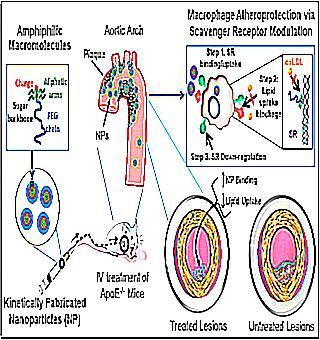Home >
Erectile Dysfunction >
Influence of atherosclerosis on potency
Influence of atherosclerosis on potency

A chronic disease that causes hardening of the walls of the arteries and a decrease in vascular lumen is called atherosclerosis. Functional damage to the vessels that bring blood through the body causes a persistent violation of the blood supply to internal organs (including the reproductive system).
The development of atherosclerotic lesions is activated after a significant violation of lipid metabolism. An excess of fat-like substances (cholesterol) for a long period of time entails a destructive change in the vascular walls, disruption of the blood coagulation and anticoagulation systems.
Symptoms of atherosclerosis
The initial period of the disease is often asymptomatic. Vascular lesions of sufficient severity, as a rule, develop after the onset of 30 years. At this age, minor plaques transform into dense, stable formations that thicken the inner lining of the vessel and contribute to its narrowing.
It is possible to identify the presence of atherosclerotic changes in the vascular lumen in a patient by the following characteristic symptoms:
- sternum pain. The pain is constricting and pressing. Discomfort most often occurs after emotional stress or increased physical activity. Significant atherosclerotic lesions of the vascular walls entail the development of pain syndrome, even when a person is at rest;
- a systematic increase in blood pressure. With the onset of severe atherosclerosis of the aorta and renal arteries, there is a constant increase in systolic pressure (the first figure recorded when measuring blood pressure);
- accelerated and irregular heartbeat;
- weakness of the upper extremities;
- pain in the legs when walking, leading to lameness and ulcerative lesions of the skin;
- memory impairment and decreased concentration, tinnitus, shortness of breath and dizziness.
The onset of atherosclerosis negatively affects the functioning of all internal systems and organs. The brain does not receive enough oxygen, and the internal organs suffer from a lack of nutrients that are carried by the blood.
The negative effect of atherosclerosis on sexual potency
Atherosclerosis affects the arterial vessels located in the groin area. The narrowing of the vascular lumen, through which blood flows to the pelvic organs, entails the onset of persistent problems with the development of an erection. The man has a strong sexual desire, but cannot bring the penis into an erect state. As a result, the penis partially swells and cannot reach the required level of rigidity to penetrate the vagina. The general well-being of a man is suffocated, strength and endurance are reduced. The onset of atherosclerotic changes in vascular tissues significantly increases the risk of ischemic stroke or myocardial infarction during intimacy. Sexual disorder develops gradually, over time, a man loses adequate and spontaneous erectile abilities.
Causes of the onset of vascular disorder
There are a number of negative factors that cause pathological changes in blood vessels through a systematic effect on the human body. Among the typical causes of the onset of vascular disease are:
- diseases of a microbial nature, in particular, cytomegalovirus and chlamydial lesions of the body
- sedentary lifestyle
- intake of excess amounts of fat-like substances that are found in fried potatoes, fatty meat and dairy products with a high fat content, fish roe and egg yolks
- exposure to stress, physical and emotional fatigue
- increased susceptibility to stressful situations, violent emotional reaction to any external stimuli
- increased blood cholesterol
- nicotine or alcohol addiction
- diabetes
- overweight. The problem can be identified after changing the parameters of the waist, the risk of atherosclerosis increases if the volume of the abdomen exceeds 102 cm
The number of persons with a tendency to develop destructive lesions of the vascular walls include:



























